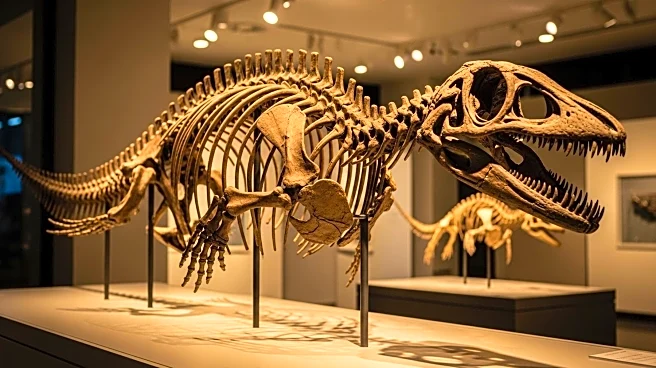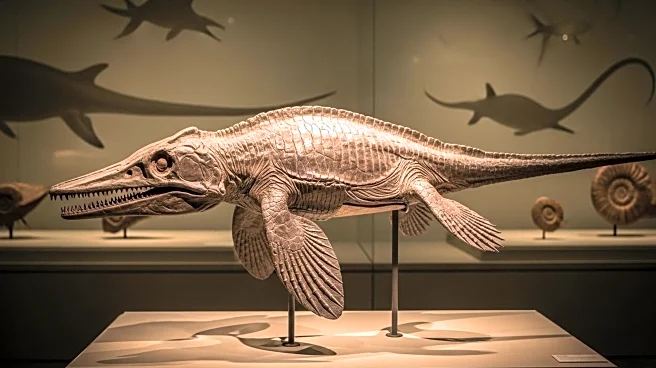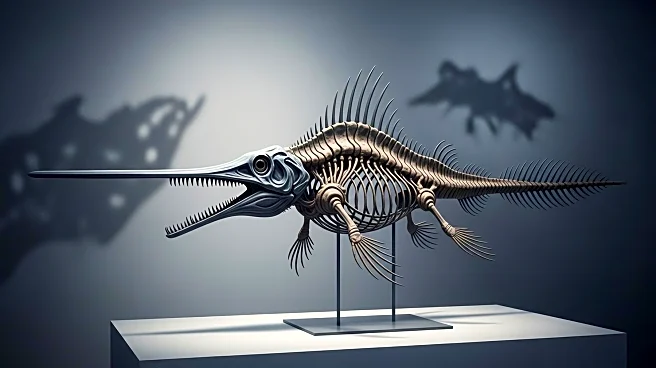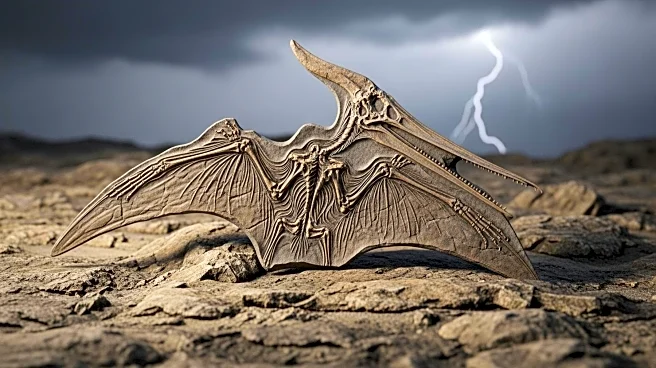What is the story about?
What's Happening?
An international research team from Switzerland and Germany has described a new ichthyosaur species, Eurhinosaurus mistelgauensis, based on fossils curated at the Urwelt-Museum Oberfranken in Bayreuth, Germany. The study, published in the journal Fossil Record, highlights the scientific importance of the Mistelgau locality, a site known for its dense accumulations of Jurassic cephalopod remains. The newly described ichthyosaur species shares similarities with modern swordfish due to its elongated upper jaw, but differs from previously known species by its robust ribs and unique skull-neck joint features. The Mistelgau site continues to provide rare insights into Jurassic marine ecosystems.
Why It's Important?
The discovery of Eurhinosaurus mistelgauensis adds to the understanding of Jurassic marine ecosystems, offering insights into the biodiversity and evolutionary history of ichthyosaurs. This research underscores the significance of fossil collections in revealing the ecological dynamics of ancient marine environments. The findings may influence future studies on the life history and ecological interactions of ichthyosaurs, contributing to broader paleontological knowledge and potentially informing conservation strategies for modern marine species.
What's Next?
Further studies on the Mistelgau material are in preparation, including analyses of injuries preserved in the ichthyosaur skeletons. These studies aim to shed light on the ecology and life history of these ancient marine reptiles, potentially revealing new information about their behavior and interactions within their environment.
Beyond the Headlines
The naming of a new species emphasizes the importance of fossil sites like Mistelgau in understanding global biodiversity during the Jurassic period. The ongoing research at this site may lead to discoveries that challenge existing theories about marine life evolution and adaptation.
AI Generated Content
Do you find this article useful?















